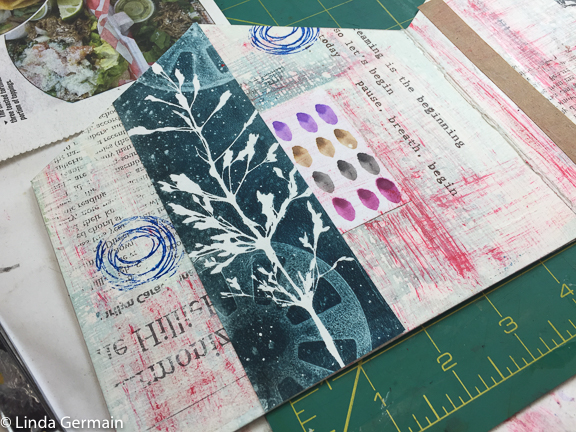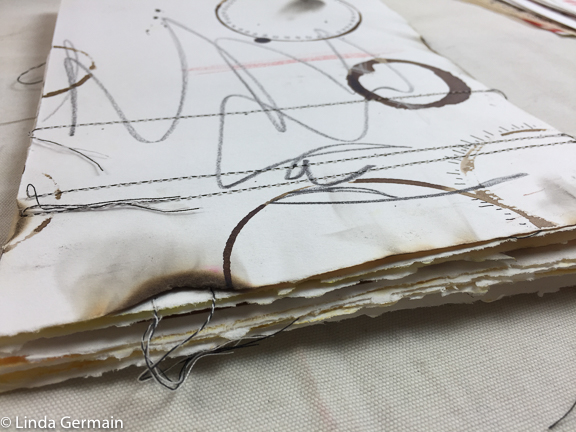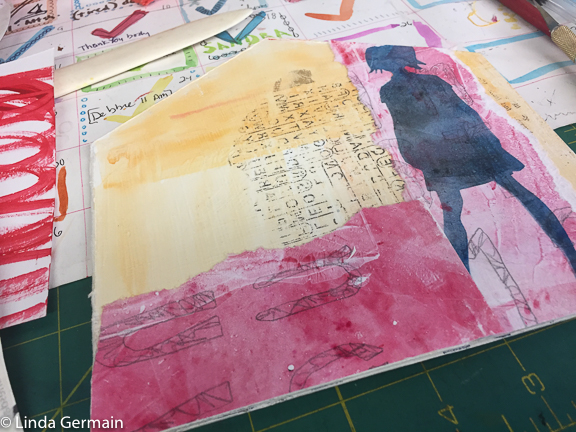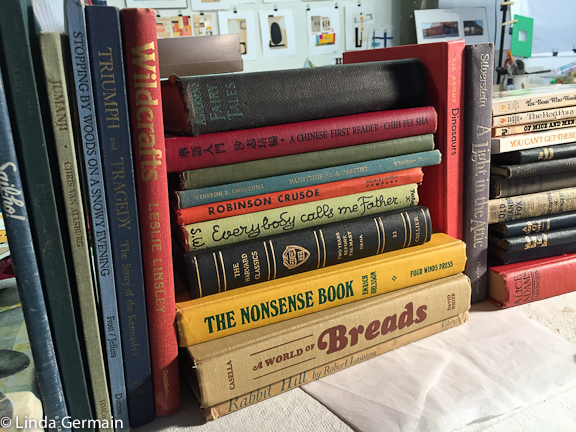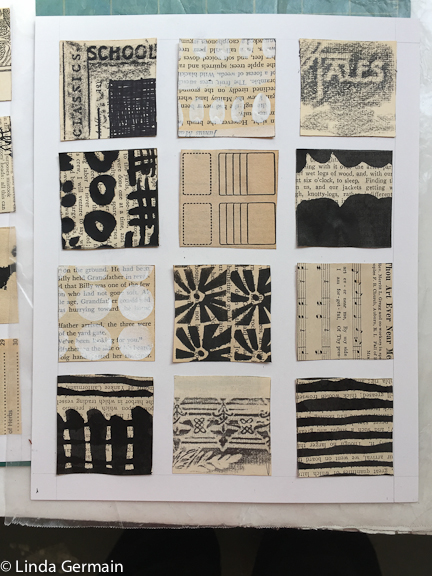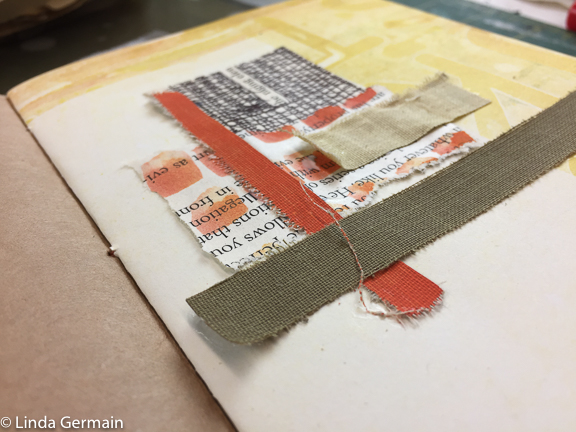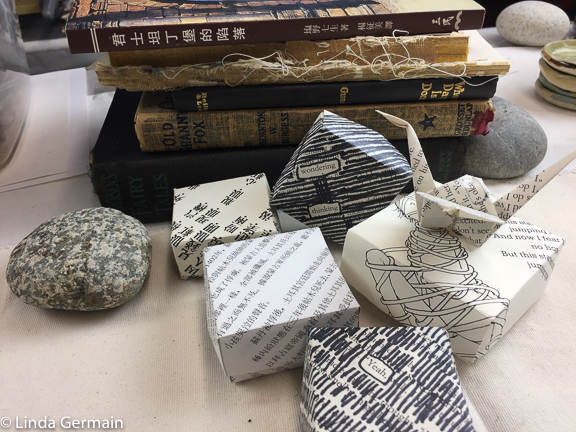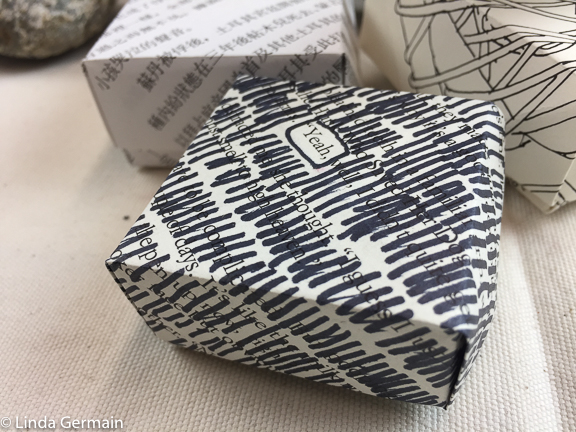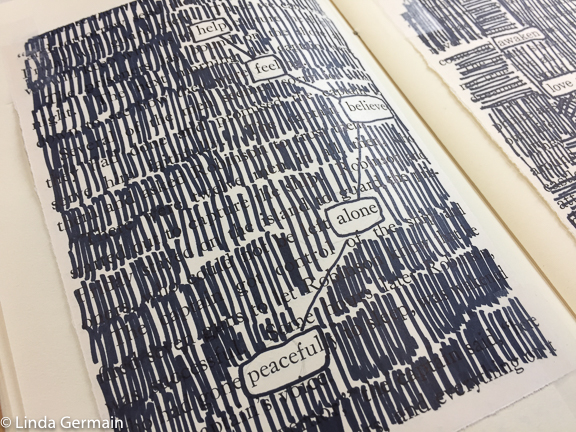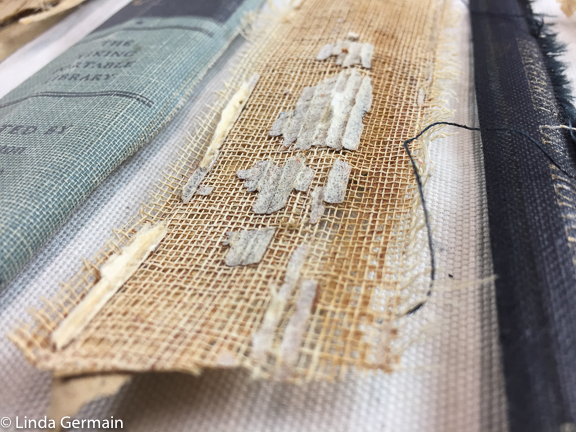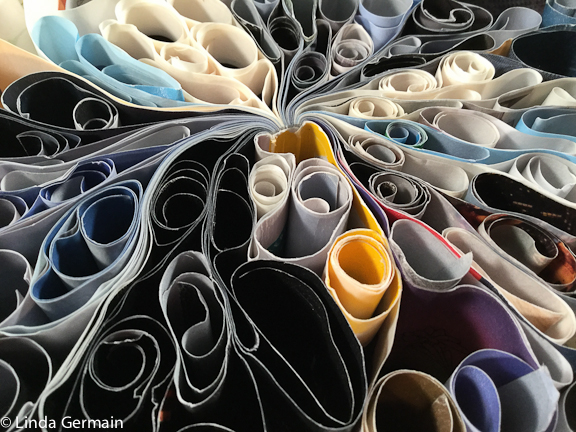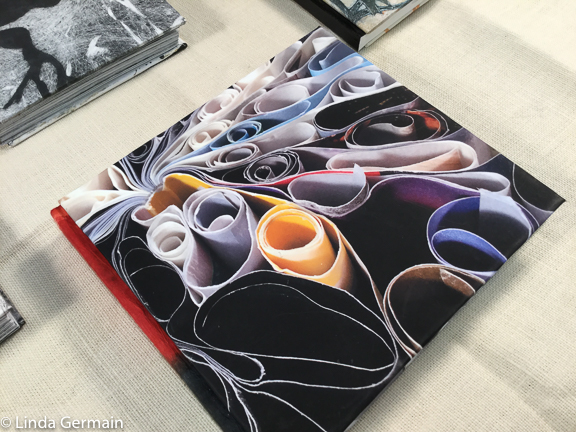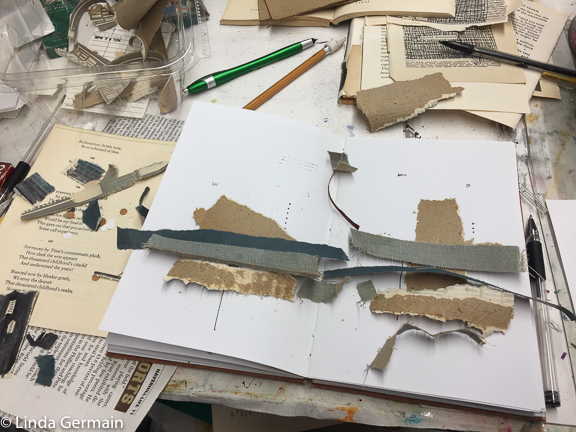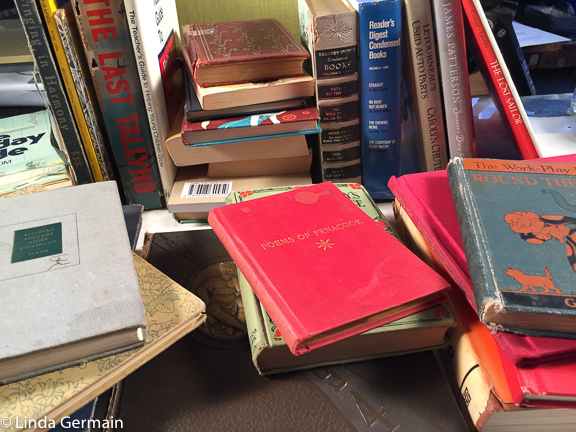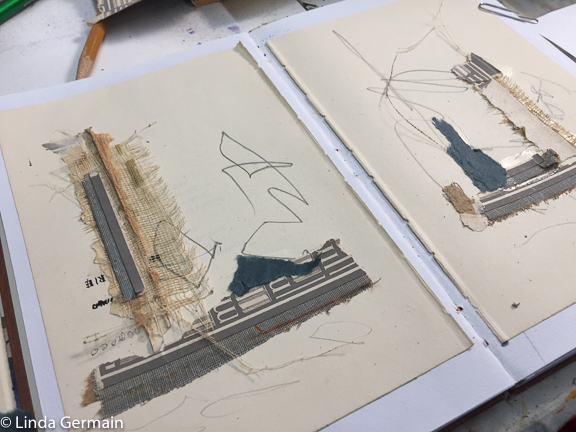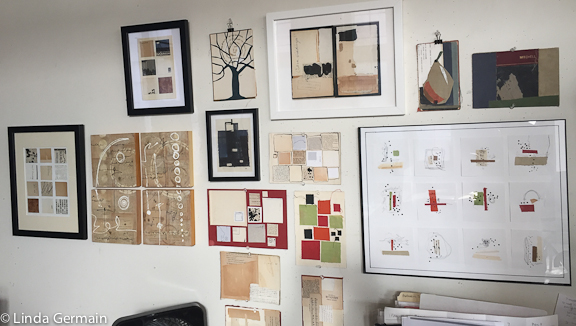I have been exploring some new book forms. I am binding gelatin prints into soft cover books and then using them like a journal.
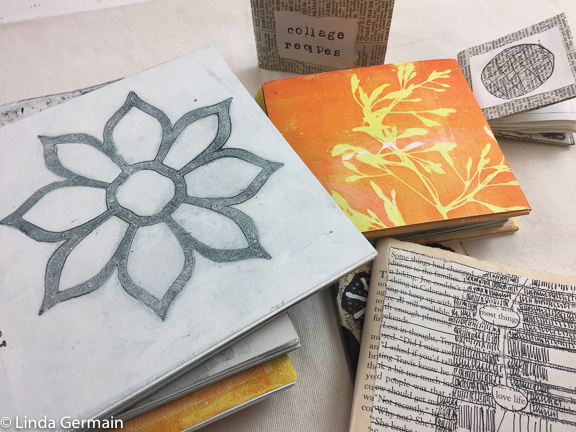
I am very pleased with the double fan book. It is a glued form that is good for single sheets of paper. This works well for all the 5″ x 7″ prints that I have been making in the last few years.

The more books that I make the more I start to follow the rules. Waiting for the glue to dry is so hard for me. I want to flip the book open and start using it right away. Or even just open and see if I glued it straight and square. But don’t do it! The flatter I can leave the wet gluey paper then the flatter it will dry.
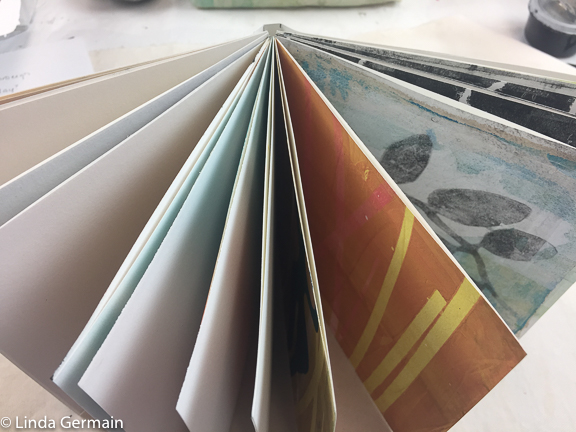
Rules I am trying to follow:
- Paper grain runs in line with the spine. My pages lay flatter when the grain of the paper runs vertically. This can be challenging when I am using old prints, that I created without reference to the paper grain.
- Use good book binding PVA glue. It is strong and has less water content. Things seem to dry flatter and smoother.
- Let everything dry completely, under pressure. Generally that means overnight. This is the hardest rule for me to follow. But it has the biggest pay off. When I let the book dry completely, then the pages lay flat and the spine seems to be stronger.
With the my version of the double fan binding there are 3 overnight waits. I am developing more patience.
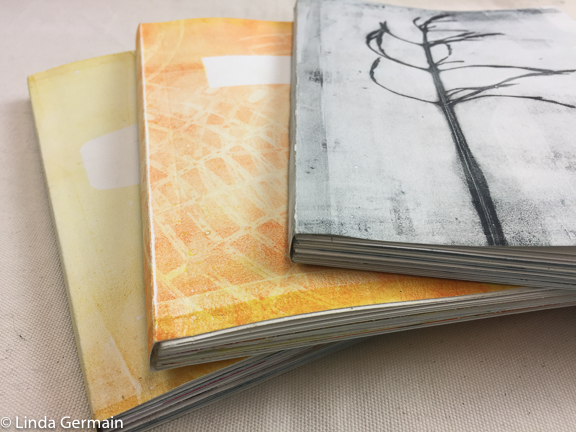
Are there parts of your practice that require
- waiting
- patience or
- following rules?
Willingness to adjust the process, sometimes pays off with different results, like flatter more pleasing books.
If you need the recipe to make the long lasting gelatin plate, you can find it here.
Happy printing!
